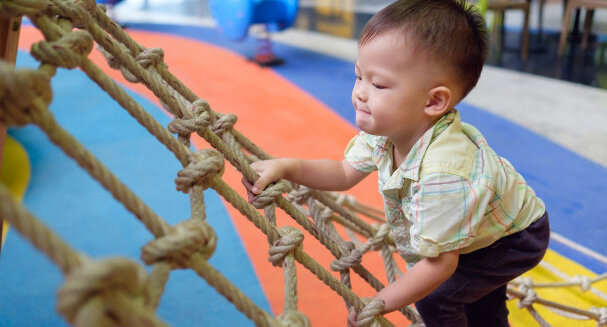Sensory Perception
Understanding the paradigm that people perceive the world differently is vital for working successfully with people on the autism spectrum.
Do you see what I see?
Do you hear what I hear?
Do you sense what perceive as I sense?
That fluorescent light in the ceiling… or is it a strobe light? What about the scraping sound that a classroom of students makes as they write their in-class essays? These are just two of the possible differences in sensing and perception that many people with autism have to deal with on a daily basis.
The Diagnostic and Statistician’s Manual of Mental Disorders (DSM 5) (American Psychological Association, 2013) and most other sources look at communication, social interaction, as well as repetitive motions and restricted interests as the main areas of impairment in people with autism (2013). The DSM 5 and many other references miss or downplay the important aspect of sensory integration dysfunction in people with autism. Understanding the paradigm that people perceive the world differently is vital for work successfully with people on the autism spectrum.
Sensory integration and sensory integration dysfunction
What is sensory integration? Sensory integration is “the neurological process of organizing the information we get from our bodies and from the world around us for use in daily life” (Kranowitz, 1998, p. 42). “Sensory integration dysfunction is the inability to process information received through the senses” (p. 8). In plain English this means that just about everyone on the autism spectrum that I have met has a large variance from might be considered as typical in how they sense and perceive the world. Some of the senses may be turned up “too high,” other are “too low,” and there may be a substantial amount of distortion in the data that is received through the senses.
SENSORY VARIATIONS
The Outer Senses
Most people are aware of the five senses of touch, hearing, taste, smell, and touch.
A theory mentioned in Temple Grandin’s book (1995) is that people on the autism spectrum are born with too many, yet immature nerve endings. This theory gives a possible explanation as to why most people with autism experience problems with sensory integration. Some or all of the five senses may be hypersensitive whereas others may be hypo sensitive. In addition, the data received from these senses may also be distorted. Some common examples of problems experienced in these five senses include the following:
Anything that overloads one or more the senses is a sensory violation to me.
The Inner Senses The vestibular and proprioceptive senses are often referred to as the hidden or inner senses. The vestibular sense “helps with movement, posture, vision, balance, and coordination of both sides of the body” (Myles, Cook, Miller, Rinner & Robbins, 2000, p. 28). Proprioception informs a person as to where their body parts are in space and the appropriate amount of force needed to perform an activity such as picking up a glass of milk. Like with the more commonly known outer senses, hyper and hypo sensitivities as well as distortions with these two inner senses cause challenges for those on the autism spectrum.
The “star” depicts some of the challenges facing a person on the autism spectrum who has sensory integration dysfunction. For example, I was in a room with a friend that has Asperger Syndrome. Suddenly, I noticed her eyes vibrating back and forth – at the same frequency of the fluorescent lights in the ceiling.
For all intents and purposes given her perception, she was in a room with a strobe light. She, like many people on the autism spectrum, perceives the cycling of the fluorescent lights. Most non-spectrum people perceive only light flickering when the bulb is very old and needs to be replaced.
Moments later she asks “can we get out of here?” and we quickly leave. Fortunately she has the communication skills needed to call attention to her predicament and thus modify her surrounds by leaving the room.
What about the 8-year old child in grade school?
He too feels as if he is sitting next to a strobe light.
How can this child be expected to quietly listen to the instructor and fill out a worksheet when he is continually assaulted with what would be a strobe light to most other people?
Suppose he were to get up out of his seat to turn off the lights. His teacher, seeing him out of his seat (once again), tells him to sit down. This goes on a few more times and the child is finally sent to the principal’s office for punishment.
Let’s consider the 4-year old nonverbal child. She too is in a room, effectively with a strobe light and this is overwhelming her visual sense. Unfortunately, she lacks the cognitive and communicative tools to tell the teacher that the lights are bothering her. It is likely that she has not realized the cause and effect between the light switch and turning off the lights. What do you get? A good old-fashioned meltdown results.
I have only considered one of the many possibilities where a behavior such as getting out of one’s seat is caused by an overload of the senses. It is important to realize that when faced with a challenging behavior one must at least consider the possibility that the person’s actions are based on a sensory overload condition.
References
American Psychiatric Association. (2013). Diagnostic and statistical manual of mental disorders of the American Psychiatric Association (5th. ed.). Washington, DC: Author.
Kranowitz, C. 1998. The out of sync child: Recognizing and coping with sensory integration dysfunction. New York: Skylight Press.
Grandin, T. (1995). Thinking in pictures: And other reports from my life with autism. New York: Doubleday.
Smith-Myles, B., Cook, K., Miller, N., Rinner, L., & Robbins, L. (2000). Asperger Syndrome and sensory issues: Practical solutions for making sense of the world. Shawnee Mission, KS: Autism Asperger Publishing Company.
Source: Faith Bangladesh





